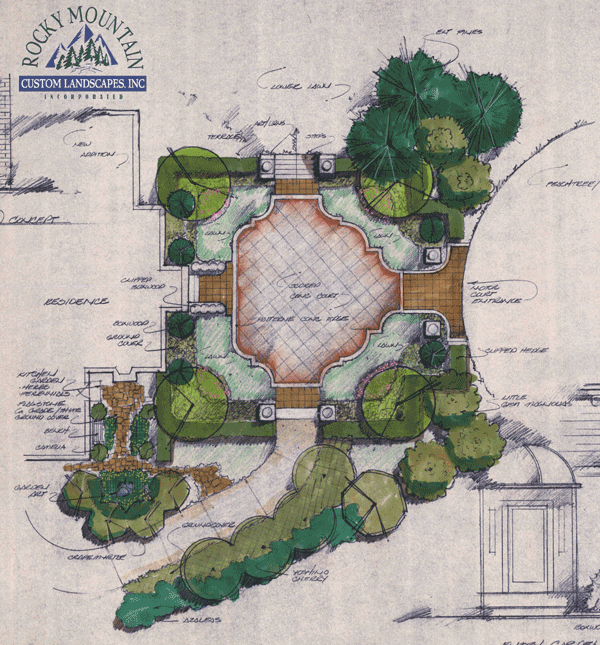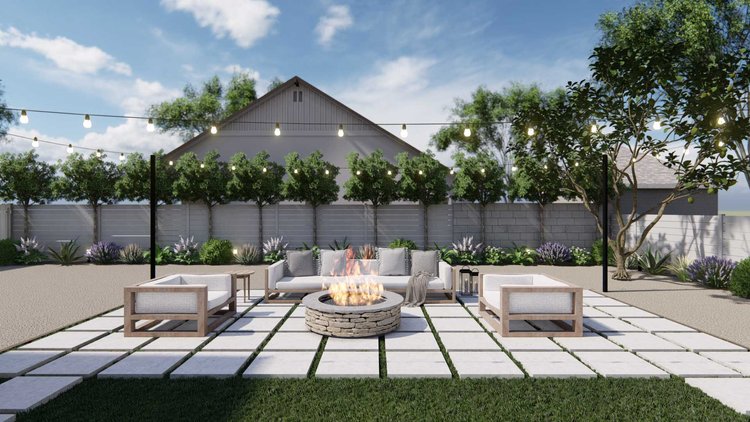Your Outside Canvas: Ogden Edge Design Company Expertise in Landscape Design
Transforming Your Landscape With Sustainable Design
With the growing concern for environmental sustainability, numerous property owners are now seeking ways to transform their landscapes into environmentally friendly sanctuaries. Sustainable style not only helps to minimize the unfavorable effect on the atmosphere however also provides various benefits for the homeowners themselves. By incorporating eco-friendly layout components, selecting native plants, and carrying out water conservation techniques, one can develop a greener and extra lasting landscape. Just how specifically can one accomplish this? In this discussion, we will discover the numerous benefits of sustainable landscaping, explore the means to incorporate environment-friendly design components, and share ideas and tricks for keeping a sustainable garden. If you're looking to transform your landscape right into a sustainable sanctuary, keep reviewing to find the keys to accomplishing a greener and extra ecologically pleasant outside space.
Advantages of Lasting Landscaping
Sustainable landscaping uses numerous advantages for both the atmosphere and property proprietors. One of the crucial benefits is water conservation. By integrating drought-tolerant plants and reliable watering systems, lasting landscape design lowers water use significantly. This not only helps to conserve a precious source but also lowers water bills for residential or commercial property owners.
An additional benefit of lasting landscaping is the reduction of chemical usage. Typical landscape design usually counts on fertilizers and chemicals, which can damage the atmosphere and human health and wellness. In comparison, lasting landscape design practices prioritize natural parasite control approaches and natural plant foods, lessening the requirement for dangerous chemicals.

Last but not least, sustainable landscape design can increase property value. A properly designed sustainable landscape not just enhances the aesthetic allure of a residential property but likewise shows a dedication to environmental obligation. This can bring in potential purchasers and lessees who value sustainable techniques, resulting in greater property demand and value.
Including Eco-Friendly Design Aspects
By incorporating green design aspects, property owners can enhance the sustainability of their landscapes while decreasing their environmental effect. Eco-friendly design aspects concentrate on using resources effectively, lowering waste, and advertising biodiversity. One important aspect is water conservation. Setting up rain harvesting systems and using drip irrigation can considerably decrease water usage. Indigenous plants need to also be prioritized in landscape design, as they are adapted to the regional environment and call for less water and maintenance. Furthermore, integrating lasting products is important. Making use of recycled or redeemed products for hardscaping not just lowers waste yet likewise adds a distinct aesthetic to the landscape. Another vital component is power effectiveness. Installing solar-powered lighting or using low-energy LED lights can reduce energy intake. Producing habitat for wild animals is a necessary environment-friendly design component (Ogden Edge Design Company). By consisting of features such as bird feeders, insect resorts, and native plantings, home owners can bring in and support a varied series of wild animals. Incorporating these green design elements not only profits the atmosphere however additionally develops a stunning and lasting landscape for homeowner to enjoy.
Deciding On Native Plants for a Lasting Yard
When designing a sustainable yard, one crucial element to think about is the option of native plants. Native plants are those that naturally happen in a certain area or environment and have adapted to the regional environment, dirt problems, and wild animals. By picking indigenous plants for your yard, you can develop a sustainable and low-maintenance landscape that benefits both the atmosphere and the regional ecological community.
Native plants have developed gradually to be fit to the local conditions, making them much more durable and much less based on chemicals, plant foods, and excessive watering. They also offer habitat and food resources for neighborhood wild animals, such as butterflies, birds, and bees, which are vital for pollination and biodiversity.
When choosing indigenous plants for your yard, it is necessary to consider aspects such as sunlight needs, soil type, and water requirements. Looking into and seeking advice from with local nurseries or gardening experts can help you determine the native plants that are best suited for your specific location.
Along with their ecological benefits, native plants can additionally include beauty and diversity to your yard. They can be found in a vast array of sizes, forms, and colors, allowing you to develop a aesthetically appealing and unique landscape.
Water Conservation Methods for a Greener Landscape
To create an extra environmentally-friendly and lasting garden, applying water conservation strategies is crucial for a greener landscape. Water is a valuable source, and as our population expands and climate adjustment increases, it recommended you read ends up being increasingly crucial to conserve water in our landscapes.
One reliable water conservation strategy is using compost. Using a layer of mulch around plants and in yard beds assists to retain wetness in the dirt, decreasing the demand for frequent watering. Compost additionally assists to subdue weed growth, which can take on plants for water.
One more technique is making use of drip irrigation systems. Unlike typical lawn sprinkler systems that spray water right Resources into the air, drip irrigation supplies water directly to the origins of plants, lessening evaporation and water waste. Drip watering systems can be quickly set up and adjusted to satisfy the details water requirements of various plants.
Rain harvesting is another useful strategy for water conservation. By accumulating rainwater from roofings, gutters, and downspouts, you can store it in barrels or storage tanks for later usage in watering your yard. This not only minimizes the need for local water however likewise makes sure that rain, a complimentary and all-natural source, is placed to excellent usage.
Last but not least, correct upkeep of watering systems is critical for water preservation (Ogden Edge Design Company). Regularly inspecting and repairing any leaks or damaged lawn sprinkler heads can stop water loss and make certain that water is being used effectively
Maintaining a Sustainable Garden: Tips and Techniques
Implementing appropriate upkeep techniques is important for keeping a sustainable garden. By complying with a couple of tips and tricks, you can make sure that your yard continues to be healthy, vivid, and environmentally friendly.
One of the most vital aspects of maintaining a sustainable yard is correct watering. By watering your plants deeply and much less frequently, you can motivate deep root growth and decrease water waste. Furthermore, making use of a drip irrigation system or rainwater harvesting can additionally preserve water sources.
Normal weeding is one more critical maintenance practice. Weeds complete with your plants for nutrients and water, so it is essential to eliminate them immediately. Think about using organic compost to reduce weed growth and retain moisture in the dirt.
Composting is an exceptional method to recycle natural waste and enrich your yard soil. By producing a garden compost top article stack, you can transform kitchen area scraps, yard trimmings, and various other organic products into nutrient-rich garden compost. This will not just decrease waste yet likewise improve soil health and wellness and fertility.

Regular trimming and proper plant treatment are also crucial for keeping a sustainable yard. Trimming helps advertise healthy and balanced growth, boost air circulation, and avoid the spread of conditions. Additionally, supplying adequate sunshine, dirt nutrients, and protection from extreme climate conditions will certainly help your plants prosper.
Conclusion
In final thought, lasting design in landscaping offers various advantages, such as saving natural deposits, decreasing air pollution, and creating a much healthier setting. By integrating environmentally friendly layout elements and picking native plants, people can create a lasting yard that supports regional biodiversity and calls for less upkeep. Executing water preservation techniques additionally adds to a greener landscape. On the whole, preserving a sustainable yard needs cautious preparation and continuous dedication, yet the incentives are well worth the initiative.
By integrating environmentally friendly design elements, picking indigenous plants, and carrying out water conservation techniques, one can create a greener and extra lasting landscape. In this discussion, we will discover the different benefits of lasting landscape design, delve right into the means to integrate environmentally friendly design components, and share pointers and techniques for maintaining a lasting yard. By integrating drought-tolerant plants and effective irrigation systems, sustainable landscape design decreases water usage substantially. By selecting native plants for your yard, you can develop a low-maintenance and sustainable landscape that benefits both the environment and the neighborhood ecological community.
By integrating environment-friendly style elements and picking native plants, people can produce a lasting garden that sustains regional biodiversity and calls for less upkeep.